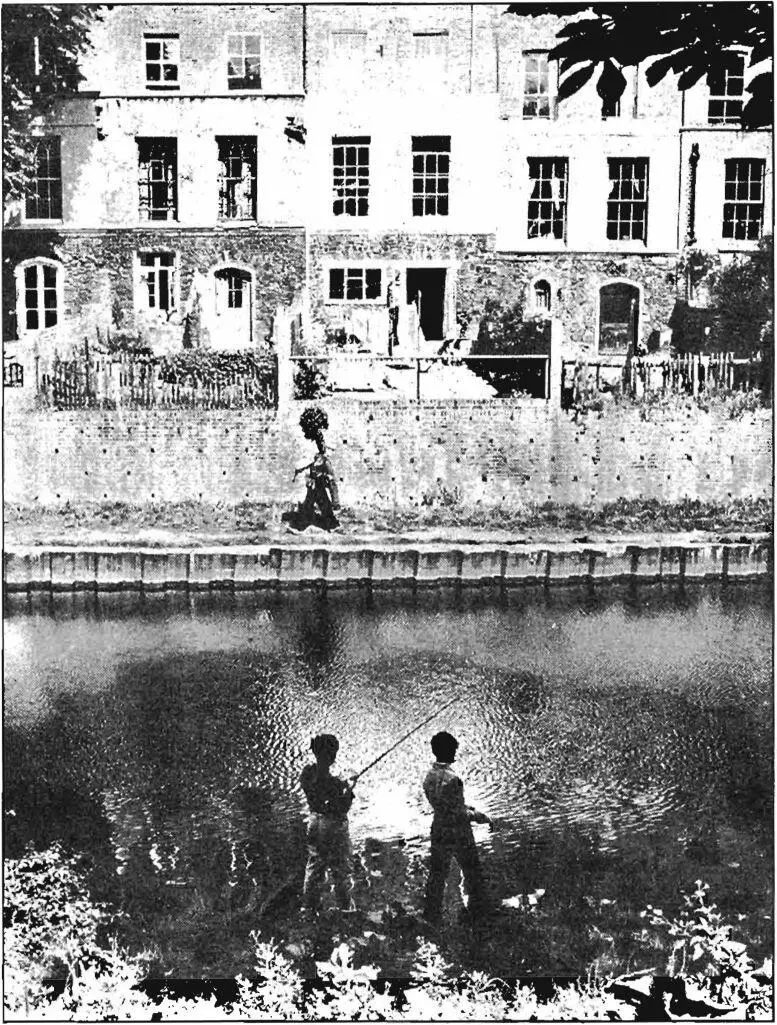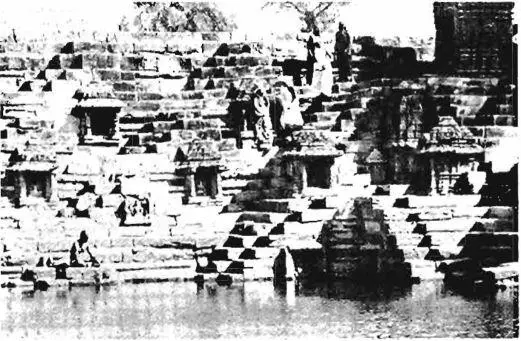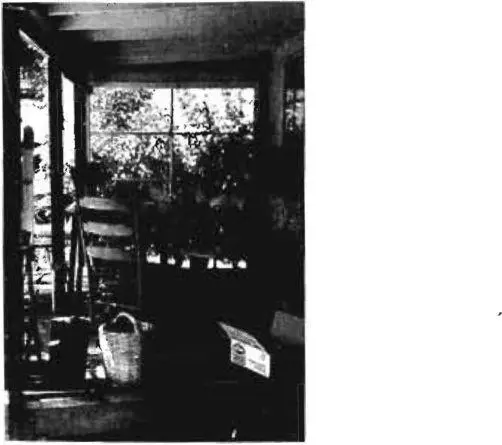Christopher alexander - A pattern language
Здесь есть возможность читать онлайн «Christopher alexander - A pattern language» весь текст электронной книги совершенно бесплатно (целиком полную версию без сокращений). В некоторых случаях можно слушать аудио, скачать через торрент в формате fb2 и присутствует краткое содержание. Жанр: Прочая научная литература, на английском языке. Описание произведения, (предисловие) а так же отзывы посетителей доступны на портале библиотеки ЛибКат.
- Название:A pattern language
- Автор:
- Жанр:
- Год:неизвестен
- ISBN:нет данных
- Рейтинг книги:3 / 5. Голосов: 1
-
Избранное:Добавить в избранное
- Отзывы:
-
Ваша оценка:
- 60
- 1
- 2
- 3
- 4
- 5
A pattern language: краткое содержание, описание и аннотация
Предлагаем к чтению аннотацию, описание, краткое содержание или предисловие (зависит от того, что написал сам автор книги «A pattern language»). Если вы не нашли необходимую информацию о книге — напишите в комментариях, мы постараемся отыскать её.
A pattern language — читать онлайн бесплатно полную книгу (весь текст) целиком
Ниже представлен текст книги, разбитый по страницам. Система сохранения места последней прочитанной страницы, позволяет с удобством читать онлайн бесплатно книгу «A pattern language», без необходимости каждый раз заново искать на чём Вы остановились. Поставьте закладку, и сможете в любой момент перейти на страницу, на которой закончили чтение.
Интервал:
Закладка:
food and drink
paved surface for dancing
*£♦
Place the bandstand in a pocket of activity, toward the edge of a square or a promenade—activity pockets (124) ; make it a room, defined by trellises and columns—public outdoor room (69); build food stands (93) around the bandstand; and for dancing, maybe colored canvas canopies, which reach out over portions of the street, and make the street, or parts of it, into a great, half-open tent—canvas roofs (244). . . .
321
| 64 POOLS AND STREAMS* |
|---|
 |
. . . the land, in its natural state, is hardly ever flat, and was, in its most primitive condition, overrun with rills and streams which carried off the rainwater. There is no reason to destroy this natural feature of the land in a town— sacred sites(24), access to water(25)—in fact, it is essential that it be preserved, or recreated. And in doing so it will be possible to deepen several larger patterns—boundaries between neighborhoods can easily be formed by streams— neighborhood boundary(15), quiet backs can be made more tranquil— quiet backs(59), pedestrian streets can be made more human and more natural— pedestrian STREET ( 100) .
We came from the water; our bodies are largely water; and water plays a fundamental role in our psychology. We need constant access to water, all around us; and we cannot have it without reverence for water in all its forms. But everywhere in cities water is out of reach.
Even in the temperate climates that are water rich, the natural sources of water are dried up, hidden, covered, lost. Rainwater runs underground in sewers; water reservoirs are covered and fenced off; swimming pools are saturated with chlorine and fenced off; ponds are so polluted that no one wants to go near them any more.
And especially in heavily populated areas water is scarce. We cannot possibly have the daily access to it which we and our children need, unless all water, in all its forms, is exposed, preserved, and nourished in an endless local texture of small pools, ponds, reservoirs, and streams in every neighborhood.
There are various ways of expressing the connection between people and water. The biologist, L. J. Henderson, observed that the saline content of human blood is essentially the same as that of the sea, because we came from the sea. Elaine Morgan, an anthropologist, speculates that during the drought of the Pliocene era, we went back to the sea and lived 10 million years as sea mam-'
3 23
TOWNS
mals in the shallow waters along the edge of the ocean. Apparently, this hypothesis explains a great deal about the human body, the way in which it is adapted to water, which is otherwise obscure (The Descent of Woman , New York: Bantam Books, 1973).
Furthermore, among psychoanalysts it is common to consider the bodies of water that appear in people’s dreams as loaded with meaning. Jung and the Jungian analysts take great bodies of water as representing the dreamer’s unconscious. We even speculate, in light of the psychoanalytic evidence, that going into the water may bring a person closer to the unconscious processes in his life. We guess that people who swim and dive often, in lakes and pools and in the ocean, may be closer to their dreams, more in contact with their unconscious, than people who swim rarely. Several studies have in fact demonstrated that water has a positive therapeutic effect; that it sets up growth experience. (For references, see Ruth Hartley et al., Understanding Children’s Play , Columbia University Press, New York: 1964, Chapter V).
All of this suggests that our lives are diminished if we cannot establish rich and abiding contact with water. But of course, in most cities we cannot. Swimming pools, lakes, and beaches are few in number and far away. And consider also the water supply. Our only contact with this water is to turn on the tap. We take the water for granted. But as marvelous as the high technology of water treatment and distribution has become, it does not satisfy the emotional need to make contact with the local reservoirs, and to understand the cycle of water: its limits and its mystery.
But it is possible to imagine a town where there are many hundreds of places near every home and workplace where there is water. Water to swim in, water to sit beside, water where you can dangle your feet. Consider, for example, the running water: the brooks and streams. Today they are paved over and forced underground. Instead of building with them, and alongside them, planners simply get them out of the way, as if to say: “the vagaries of nature have no place in a rational street grid.” But we can build in ways which maintain contact with water, in ponds and pools, in reservoirs, and in brooks and streams. We can
6 4 POOLS AND STREAMS
even build details that connect people with the collection and run-off of rain water.
Think of the shallow ponds and pools that children need. It is possible for these pools and ponds to be available throughout the city, close enough for children to walk to. Some can be part of the larger pools. Others tan be bulges of streams that run through the city, where a balanced ecology is allowed to develop along their edges—ponds witli ducks and carp, with edges safe enough for children to come close.
And consider the system of local and distribution reservoirs. We can locate local reservoirs and distribution reservoirs so that people can get at them; we might build them as kinds of shrines, where people can come to get in touch with the source of their water supply; the place immediately around the water an atmosphere inviting contemplation. These shrines could be set into the public space: perhaps as one end of a promenade, or as a boundary of common land between two communities.
 |
| Indian steffed well. |
And think of running water, in all its possible forms. People who have been deprived of it in their daily surroundings go to great lengths to get out of their towns into the countryside, where they can watch a river flow, or sit by a stream and gaze at the water. Children are fascinated by running water. They use it endlessly, to play in, to throw sticks and see them disappear, to run little paper boats along, to stir up mud and watch it clear gradually.
CHOOSING A LANGUAGE FOR YOUR SUBJECT
the old porch. They had to stay where they are, because they hold the roof up. But, following columns at the corners(212), the platform was very carefully tailored to their positions—so that the columns help define the social spaces on either side of them.
Finally, we put a couple of flower boxes next to the “front door bench”—it’s nice to smell them when you sit there—according to raised flowers(245). And the old chairs you can see in the porch are different chairs(251).
You can see, from this short example, how powerful and simple a pattern language is. And you are now, perhaps ready to appreciate how careful you must be, when you construct a language for yourself and your own project.
 |
| The finished, forch |
The character of the porch is given by the ten patterns in this short language. In just this way, each part of the environment is given its character by the collection of patterns which we choose to build into it. The character of what you build, will be given to it by the language of patterns you use, to generate it.
Читать дальшеИнтервал:
Закладка:
Похожие книги на «A pattern language»
Представляем Вашему вниманию похожие книги на «A pattern language» списком для выбора. Мы отобрали схожую по названию и смыслу литературу в надежде предоставить читателям больше вариантов отыскать новые, интересные, ещё непрочитанные произведения.
Обсуждение, отзывы о книге «A pattern language» и просто собственные мнения читателей. Оставьте ваши комментарии, напишите, что Вы думаете о произведении, его смысле или главных героях. Укажите что конкретно понравилось, а что нет, и почему Вы так считаете.












